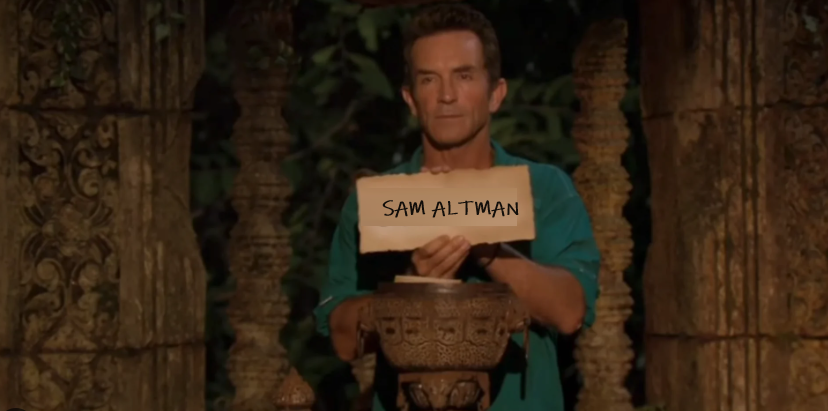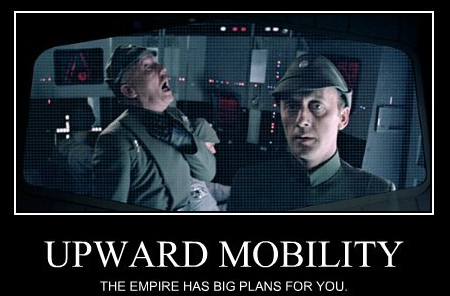They say you will eventually be the villain in someone else’s story. What happens when you become the villain in your own story? This story is fifty percent confession and fifty percent personal therapy.
In 2003, I took a role as Director of Development at Digital Chocolate. I did not have the presence of mind to advocate for a higher-level role. While I probably did not qualify for it on paper, I think it would have helped the business immeasurably due to how the first year turned out. By six months, I had simultaneously shipped one of the better-selling launch titles for the company and turned in a resignation. I think I have spoken about some of those challenges in other blog posts, and I appreciate that Trip talked me out of quitting. At the same time, the next six months were essentially me trying to make sense of being on the struggle bus.
Enter Oasis.
One of our developer partners for mobile games at the time was Mind Control Software, a company helmed by Andrew Leker. Andrew is a game developer’s game developer. I really enjoyed learning game design from Andrew and his entire team. While they were developing one of Digital Chocolate’s early titles, he was also developing a great little game called Oasis.
I don’t remember how it came up, but I was able to get a copy of the game early on to help test it.
It was love at first sight.
Oasis is essentially a speed-round of Civilization. It captures the charm, beauty, and mystery of the early phase of Civilization. This is the part of the game I totes adorbs. You have a finite number of turns to build up your cities into a connected nation-state, and when the turns are up, a barbarian horde descends on the map and tries to destroy it.
I could spend about an hour or two explaining all the intricacies of Oasis and still not be close to capturing how magical this game is.
Andrew and his team knew I was in love with their game, and I sincerely appreciated the opportunity to test it and give some feedback on the product. I probably drunk-texted my appreciation to Andrew a little too much. I was having an unusual year, and this was one of those “mistakes were made” moments for me. That year at GDC, they made t-shirts for Oasis, and I remember calling Andrew and asking if I could have the game logo ironed onto the inside of the shirt instead of the outside so it could be closer to my heart.
I loved that little game so much. I still do.
The best part about this little love story is that I have a credit on Mobygames as a scenario designer. Don’t stare too hard at the rest of my credits, you filthy creepers, because it does not include a plethora of games that I am proud of. Let us go back to the story.
Before the game went live, Andrew asked me if I would help test out the level design system for the game. I told him that I would not do it. Just kidding. I leaped into that with both feet. They had a configuration file you could use to tune levels, and I was happy to put it through its paces. I spent the next few days on evenings and weekends making an interesting little twelve-part story that was expressed through the configuration file.
I was incredibly grateful for this opportunity to do something creative due to the work challenges I was having at Digital Chocolate. I feel quite strongly that side projects give people tremendous benefits, and while I was filing at the bars of my cage at work, this project gave me amazing therapeutic value.
After sending it over to Andrew and his team to check it out, he called me up and gave me kudos for making an interesting story. He asked me if it was okay to include it in the final shippable game. Be still my beating heart! Of course, I said yes! I was humbled that this creative extracurricular task would see the light of day!
I remember being excited to check it out when the game finally shipped. It won two awards at the Independent Games Festival that year, one for game design and one for the Seamus McNally Award for downloadable games. I bought two copies of the game. One digital copy as soon as it was available so I could play the game and support indie development. I also bought a physical copy when I finally found one in a game store because I am one of those “must buy the physical thing” people.
I remember unlocking my little scenario in the game and playing it through.
This is where the lovely Hallmark Movie music starts to slow down and go off-key.
I have to change gears a second and talk about John, the player of games. One of the things that I tell people who want to pursue a career in games is that you never look at games the same way again. You always have this observer on your shoulder, taking notes and making fourth-wall-breaking comments as you play. You ask yourself what you like. You ask yourself what you don’t like. You gently “tut tut” gaffes in the first-time user experience and reflect on how you would improve this game. I am no different. Thankfully, there are a few games where their blazing brilliance makes this voice a tiny whisper at best. Terraria, Minecraft, World of Warcraft, Vampire Survivors, and Ultima IV are the best games by this unusual measure. It does mean I have a small stack of games that I fear to open. The little angry observer on my shoulder glares at me as I write this because he wants to be heard. I fear his voice, and I want to turn to him and scream, “Just let me play the fucking game!”
There are a few chief criticisms that he levels at some games, and two of them are ones I vehemently agree with.
The first thing that I detest is jumping puzzles. There are a few jumping puzzles in World of Warcraft. There is precisely one entrance to a dungeon with a jumping puzzle, and I avoid it like the plague. Shame on the level designer who thought I would look for one-up mushrooms and hidden coins in Kalimdor. Super Mario is four doors down.
The second thing I detest is cheap designer meta-gaming. Sometimes, a developer constructs an “aha” moment inside of a game where, to solve a particular problem, you need a piece of player knowledge that is generally only available by attempting the puzzle and failing to solve it. “Ha ha ha! Stupid player!” He intones, as you die and hit the retry button, “I am smarter than you!” I hate that so much because it is a stupid design trick.
You can see where this is going.
The scenario I constructed for Oasis had a player traveling through twelve islands. Each island included different challenges and used different parts of the scenario design tools. By the time I got to the eleventh island, I was largely out of good ideas. Without going into too much detail, each city in the game could include a treasure that would help you, and in one case, the city could also include a traitor that would turn the city against you at the end. I decided to test this out and make a level where you needed to waste a click on every city because I made every city except for one possess one of these traitors. That meant you needed to find one city and beef it up like crazy to survive the game-ending assault.
That is right.
“Ha ha ha! Stupid player! I am smarter than you!”
There is a brief hint in the narrative that this moment is coming. The only way to really understand how to beat this level is to get to the end of it and see how many traitors are on the map.
That is right. In the interests of science, testing, and love of a great game, I defaulted to the most base of all designer patterns and trumpeted my shameful cleverness over the player base.
I became the thing that I hated the most.
The good news is that while the game was celebrated as an amazing design marvel and is essentially “a game developer’s game,” it was not a commercial success. Very few players were harmed by this.
It is simultaneously one of the things I am proud of, having contributed to the scenario design of a game I love to play, and ashamed of for the unspeakable crime I committed against my own design sensibilities.
What an amazing journey, right? I am emotionally spent after confessing my professional sins here.
I have to apologize for not writing anything last week. I did not put my “See you next week!” post-it note. Last week was Halloween weekend, and high winds and scheduling conspired to blow up my writing habit as I struggled to get my various and sundry decorations set up for Tuesday’s festivities. We go all in on Halloween here. Full-sized candy bars. Giant inflatable spiders and pumpkins. We even have a twelve-foot arch where most neighborhood holiday selfies happen. So it is for a good cause. I ignored you all because of the children. I would put an Amazon Affiliate Link for the said arch. Alas, it was a Spirit of Halloween purchase, so I cannot unreasonably collect nickels from Mister Bezos.
I hope you forgive the gap, and I will see you all next week.









